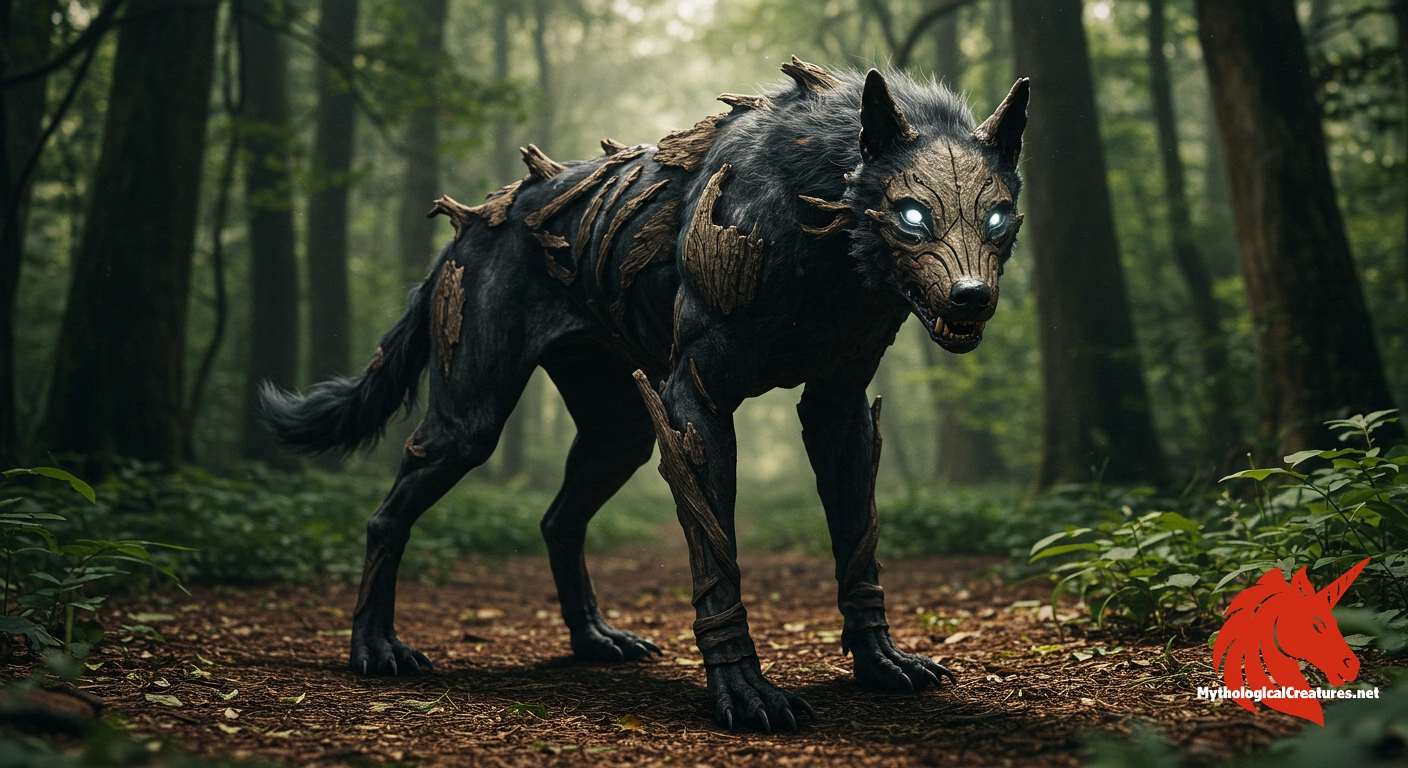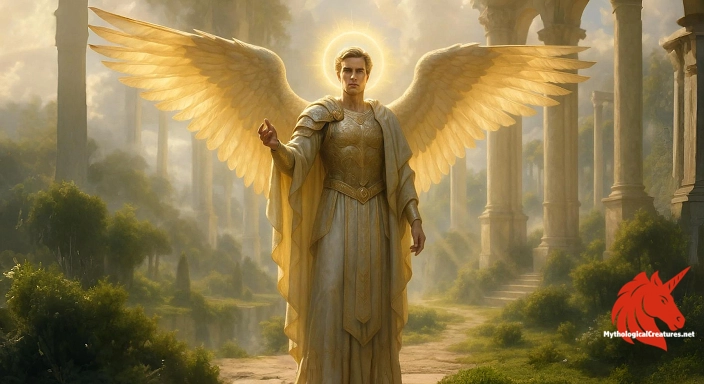Penghou: Penghou is a mysterious tree spirit from Chinese mythology that manifests as a tail-less, black dog sometimes bearing a human face.

Penghou
Penghou - Embodies the belief that ancient trees harbor a mystical life force, reflecting the deep connection between nature and the supernatural in Chinese tradition
Origins & First Encounters
Penghou emerges as a fascinating tree spirit from ancient Chinese mythology, intricately woven into the fabric of nature and mysticism. Its origin story centres on the belief that the spirit evolves from the very essence of wood, symbolising the life force inherent in trees. Bearing the evocative title of 'drumbeat marquis,' the creature hints at a mysterious connection with ritual and the heartbeat of the forest. Early accounts, dating back to the third and fourth centuries, capture its enigmatic presence and serve as the foundation for its enduring myth. The narrative reflects a culture deeply influenced by nature worship, where even the silent woods whisper stories of supernatural transformation. The Penghou’s existence underscores a delicate balance between the tangible elements of nature and the intangible realms of spirit. Its depiction not only celebrates the vitality of ancient timber but also captures the transient beauty of decaying wood. Throughout its mythic journey, the creature has been portrayed both as a benign entity of nature and as a portent of the unknown. This duality enriches its lore and offers insight into ancient perceptions of the natural world. Evidently, the Penghou remains an emblematic figure, bridging the gap between primitive natural reverence and sophisticated mythic symbolism.
Source Texts & Tale Variants
The earliest texts introduce the Penghou in a manner that blends natural observation with mythic allegory. One of the primary sources, the Baize tu, describes it as a spirit born from the living essence of wood, setting the stage for later, more elaborate narratives. A subsequent account in the Soushenji recounts an episode where a felled camphor tree reveals a mysterious creature bearing both animal and human attributes. This narrative deepens the myth by presenting the Penghou as a being whose physical form is as mutable as the organic matter it inhabits. Additional textual sources, such as Li Shizhen’s Bencao Gangmu, have further elaborated on these early versions, even attributing culinary and medicinal properties to its meat. Variations in the stories sometimes extend the creature’s transformation, with a 1,000-year-old tree’s essence potentially evolving into a distinctly different spirit. These different layers of narrative indicate a rich interplay of folklore and early medicine. Beyond its literal description, the diverse renditions highlight a cultural dialogue surrounding transformation, nature, and the supernatural. Each source contributes a unique facet to the Penghou’s identity, forming an intricate tapestry of myth. Together, these accounts underscore the myth’s evolving nature and its capacity to adapt across centuries of oral and written tradition.
Form & Powers
The Penghou is rendered in vivid detail with a physicality that bridges both the natural and the spectral. It is most commonly described as resembling a black dog, yet notably without a tail, an attribute that lends it an uncanny distinction. Its skin and fur have been likened to the rough texture of old bark, reinforcing its intrinsic connection to trees. Some depictions add an element of surreal brilliance, where its eyes are imbued with a subtle, eerie luminosity that hints at a hidden inner life. In one memorable version, a human-like visage is seen emerging from within its form, suggesting an overlap between animal instinct and human consciousness. The creature’s size appears variable; it is sometimes portrayed as a modest presence and at other times as a formidable entity, reflective of the mystique of ancient wood. This fluidity in its physical description emphasizes a constant metamorphosis, much like the ever-changing nature of the forest itself. The physical attributes of the Penghou, from its tailless form to its ambiguous facial features, challenge conventional boundaries between flora and fauna. Such descriptions invite the viewer to consider the possibility that the creature is a physical manifestation of natural energies. Ultimately, the detailed portrayals contribute to an enduring aura of enigma and wonder surrounding its character.
Regional Faces
Regional interpretations of the Penghou offer a fascinating glimpse into how local cultures reshape mythic narratives. In many parts of China, the creature is intimately associated with ancient trees and is sometimes revered as a guardian of the deep forest. In contrast, other traditions paint the Penghou as a cautionary figure, embodying the unpredictable and sometimes wrathful forces of nature. Southern cultural depictions often present the spirit with a benevolent air, suggesting an intrinsic link between community and the natural world. Conversely, in northern legends, where the environment is harsh and unyielding, the creature’s presence is more ominous, serving as a warning to respect the untamed wilderness. The spread of this myth into Japan, where it appears as Hōkō, further illustrates the adaptability of the tale across cultural and geographic boundaries. Japanese interpretations tend to merge the entity with the country’s rich array of supernatural beings, adding layers of playful yet eerie characteristics. Artistic renditions in various regions can vary from delicate brush strokes to dramatic portrayals, each reflecting local aesthetics and belief systems. The regional adaptations highlight how the Penghou’s dual nature is fine-tuned to reflect local environmental concerns and cultural values. Across these variations, the creature retains its core association with wood and transformation, yet its role is fluid enough to resonate in many different settings.
Cultural Parallels
The thematic resonance of the Penghou finds echoes in mythologies throughout the world, allowing for intriguing cross-cultural comparisons. In European tradition, entities such as dryads and other woodland sprites similarly embody the life force of trees and the mystery of the forest. These beings, like the Penghou, blur the boundaries between the tangible and the supernatural, offering warnings and wonders in equal measure. Japanese folklore, with its rich catalogue of yokai, includes creatures that share the enigmatic qualities and transformative powers seen in the Penghou narrative. The concept of a being evolving from ancient wood is a recurring motif in many cultures, symbolising nature’s perpetual cycle of growth and decay. Although the culinary and sometimes medicinal aspects of the Penghou remain unique, its overall themes of transformation and duality find parallels in stories of shapeshifting and metamorphosis across continents. Both Eastern and Western mythologies use such creatures as metaphors for environmental change and the consequences of human interference with nature. The interplay of benevolence and menace in these beings reveals a universal human fascination with the forces that govern life and the wild. Despite regional differences in detail and emphasis, the underlying motifs encourage a broader dialogue about humanity’s relationship with nature. In this comparative light, the Penghou stands as a vibrant example of how diverse cultures use myth to articulate their understanding of the natural world.
Legacy & Modern Evolution
The depiction of the Penghou has undergone significant transformation, mirroring shifts in cultural and environmental awareness over the centuries. Early representations in classical texts positioned the creature as an enigmatic spirit closely tied to the natural world, serving as both a marvel and a warning. As history progressed, the myth of the Penghou was reinterpreted in various contexts, from medicinal compendiums to elaborate folklore collections. The creature’s earlier associations with the sacred vitality of timber have been enriched through modern reinterpretations that often cast it as a symbol of ecological fragility. Contemporary artists and writers have worked to incorporate the Penghou into modern narratives, using its image to comment on environmental exploitation and the loss of natural heritage. In modern popular culture, the blend of supernatural mystery with tangible natural elements resonates with themes of conservation and the reinterpretation of ancient wisdom. This evolution reflects a broader trend in myth, where traditional sequences are adapted to speak to current ethical and environmental dilemmas. The resilience of the Penghou myth demonstrates how ancient lore can be reframed to address modern challenges. Its legacy now straddles the divide between traditional folklore and contemporary storytelling, inviting new generations to ponder the mysteries of the natural world. In essence, the Penghou endures not only as an ancient spirit but as an ever-adapting symbol of nature’s enduring power and vulnerability.
Interesting Fact
An intriguing aspect of the Penghou is that, despite its eerie origin as a tree spirit, its meat was historically consumed for its reputed healing properties, illustrating the ancient interconnection between natural phenomena and medicinal lore.
Quick Creature Info
Associations:
Our Mythic Legendary Rating:

Also Sometimes Known As:
Habitat:
Supernatural Powers:
Physical Attributes:
Abilities:
Behavior:
Lore:
References
Discover Another Mythical Legend You May Not Have Heard Of?
Uncover the mysteries of ancient folklore and expand your knowledge of legendary beings from cultures around the world.
Dare to Meet the Zadkiel....
Mythical Disclaimer: The images and data on this site are derived from various historical and literary sources, but we have found that many myths often have multiple versions and interpretations across references, sometimes contradictory. As a result, these creature depictions are artistic interpretations—imaginative blends of folklore, legend, and a dash of AI guesswork. Because creature descriptions vary widely, our illustrations and accompanying information represent our best effort to honor mythology while bridging creative gaps. Enjoy these interpretations—just remember, we've done our best to respect the stories and validate available data, but in the realm of mythology, details often shift, imagination leads the way, and nothing is ever set in stone!
Curated by the Mythological Creatures Team (rev. May 2025)
